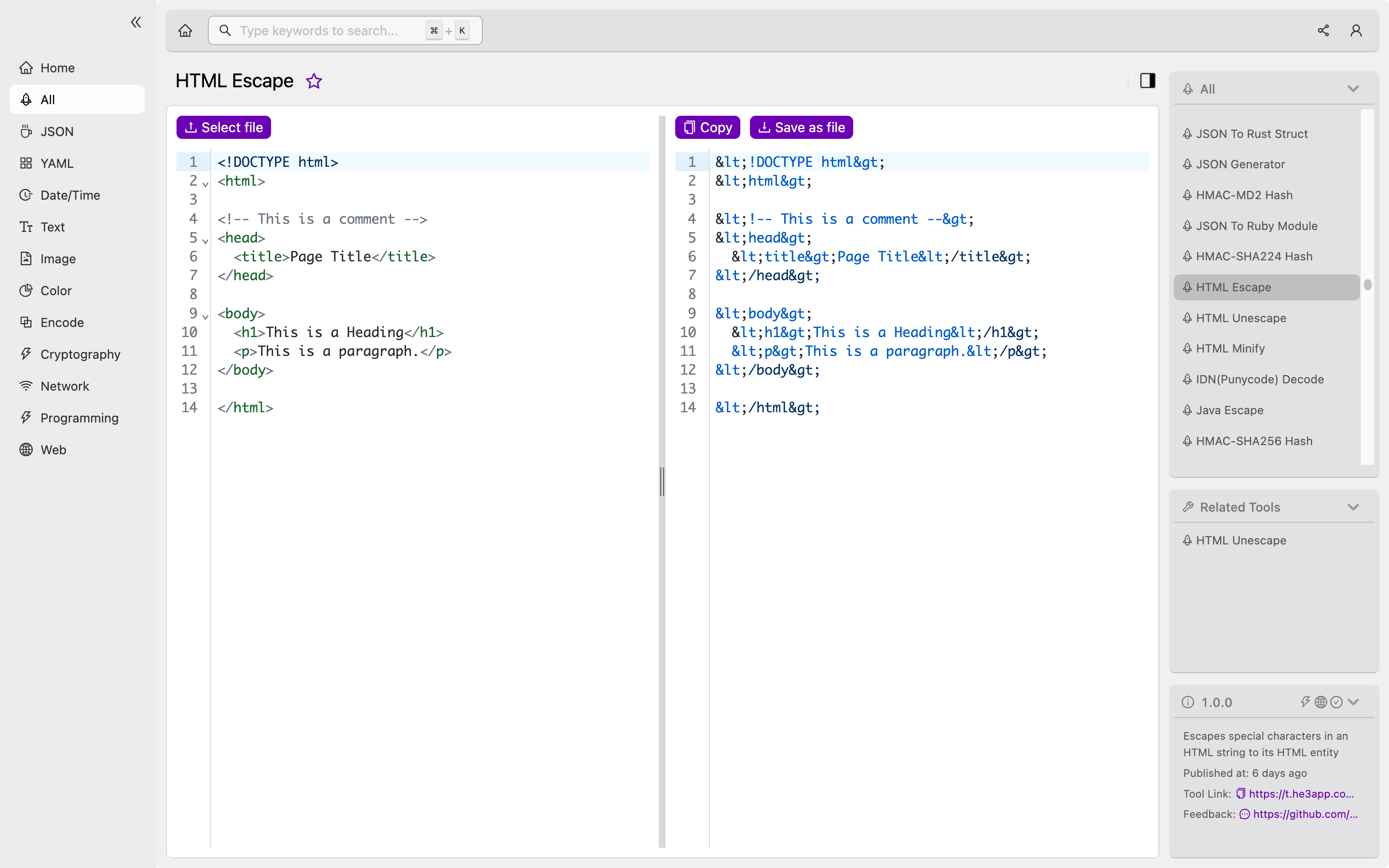Introduction
As a developer, you know how important it is to keep your website secure. Cross-site scripting (XSS) attacks are a common vulnerability that can compromise user data and damage your reputation. HTML Escape is one technique you can use to prevent XSS attacks and keep your content safe.
What is HTML Escape?
HTML Escape, also known as HTML encoding, is a method of converting characters and symbols into their HTML entity equivalents. This means that special characters, such as < and >, are replaced with their corresponding HTML entities, such as < and >. By doing so, you can prevent these characters from being interpreted as code by the browser, which can prevent XSS attacks.
How Does HTML Escape Work?
HTML Escape works by converting potentially dangerous characters into their safe HTML entity equivalents. For example, consider the following string of code:
<script>alert("Hello, world!");</script>If you were to render this code directly in your HTML, it would execute the JavaScript code and display an alert message. However, if you use HTML Escape to encode the string, it would look like this:
<script>alert("Hello, world!");</script>When the browser renders this encoded string, it will display the literal HTML entities rather than executing the JavaScript code. This can help prevent XSS attacks by ensuring that user input is always interpreted as plain text.
How to Use HTML Escape
There are several ways to use HTML Escape in your web development projects. One way is to manually encode your strings using a reference chart of HTML entities. For example, to encode the < and > characters, you would use < and >, respectively.
Another way to use HTML Escape is to use an encoding function provided by your programming language or web development framework. For example, in PHP, you can use the htmlspecialchars() function to encode your strings.
Or you can use HTML Escape tool in He3 Toolbox (https://t.he3app.com?2ii8 ) easily.

Scenarios for Developers
HTML Escape is a useful technique for preventing XSS attacks in a variety of scenarios. Some common use cases include:
- User input: When accepting user input, always use HTML Escape to ensure that special characters are encoded and cannot be executed as code.
- Server-side rendering: If your application does server-side rendering, make sure to use HTML Escape to encode any user-generated content that may be included in the response.
- Email templates: If your application sends emails with dynamic content, make sure to use HTML Escape to encode any user-generated content that may be included in the email.
Key Features of HTML Escape
- Converts special characters to their corresponding HTML entities.
- Helps prevent XSS attacks and keep your content safe.
- Can be used manually or with an encoding function provided by your programming language or web development framework.
Misconceptions about HTML Escape
One common misconception about HTML Escape is that it completely protects your website from all forms of XSS attacks. While HTML Escape is certainly an important part of an overall security strategy, it is not a foolproof solution. Attackers can still bypass HTML Escape by using alternative encodings or injecting malicious code in unexpected ways.
FAQs
Q: Is HTML Escape the only way to prevent XSS attacks? A: No, there are many other techniques you can use to prevent XSS attacks, such as input validation, output encoding, and content security policies.
Q: Can HTML Escape cause performance issues? A: In most cases, HTML Escape has a negligible impact on performance. However, if you are encoding large amounts of data or using inefficient encoding methods, it can slow down your website.
Q: Is HTML Escape only necessary for user-generated content? A: No, HTML Escape should be used for all content that could potentially contain special characters, including dynamic content generated by your application.
Conclusion
HTML Escape is an important technique for preventing XSS attacks and keeping your content safe. By converting special characters into their corresponding HTML entities, you can ensure that user input is always interpreted as plain text and cannot be executed as code. To learn more about HTML Escape and other web development techniques, check out the links below.
References:
